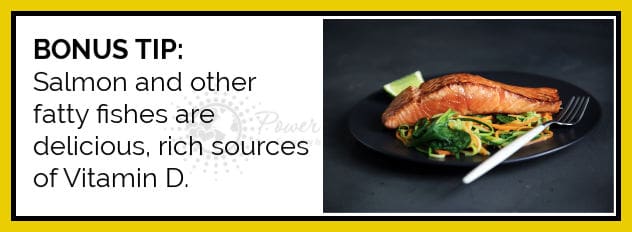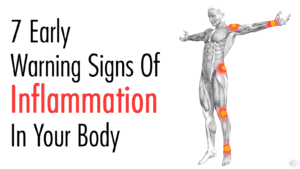If you’ve never tried overnight oats, you’re missing out on a craze that’s both tasty and healthy. Whether you eat them for breakfast or snacking, you’ll find them satisfying.
Oats deliver all kinds of nutritional benefits, and they’re so quick and easy to prepare that you’ll be stunned at the sumptuous, flavorful meals that you can make with them in five minutes or less.
Are you intrigued by the possibility of overnight oats? Are you ready for on-the-go goodness in multiple flavors? Here are just 10 of our favorite overnight oats recipes!
1. Apple Cinnamon Overnight Oats
- 1/2 cup oats
- 1/2 cup milk
- 1/4 cup yogurt
- 1/2 cup chopped apple bits
- 1/8 teaspoon cinnamon
- 1 teaspoon honey
Perfect for chilly mornings, these apple cinnamon oats are the overnight version of spiced oatmeal. You can even stick them in the microwave for 30 – 60 seconds if you want them to get warm and gooey.
The yogurt gives them a tang that keeps them from being too sweet. Meanwhile, the cinnamon and honey will melt in your mouth and feel like a decadent indulgence even though they’re part of a perfectly healthy snack.
You can add chia seeds, flaxseeds, or crushed granola bits for extra texture. The choice is yours. Apple cinnamon oats are an autumn delight that you could modify in many ways!

2. Vanilla Orange Overnight Oats
- 1 cup oats
- 1 cup of orange juice
- 1/2 teaspoon vanilla
- 1 cup unsweetened milk
- One scoop vanilla protein powder
- 1/2 teaspoon orange zest
- 1/2 cup chia seeds
- 1 tablespoon chopped pecans
You’ll put some pep in your step with vanilla orange oats. Their tangy flavor will wake you up, but their underlying sweetness keeps you diving back into the jar for more.
Surprisingly, vanilla, orange oats are also healthful for you. They might taste like a sugary dessert, but their ingredients are natural ones that come with a lot of health benefits. For example, the vitamin D in orange juice can help with everything from bone density to insomnia.
Vanilla and orange oats are best served cold, so stick them in the fridge before or after soaking. This meal is one of those overnight oats recipes to save for summer!
3. Carrot Cake Overnight Oats
- 1 cup oats
- 1/2 cup grated carrots
- 1/2 teaspoon allspice
- 1 teaspoon cinnamon
- 1 tablespoon chia seeds
- 3 tablespoons raisins
If you’re trying to get more veggies, here’s one of our favorite overnight oat recipes. It uses finely grated carrots to add both taste and texture to a sweet but savory mix.
Despite the name, it isn’t that cake-like. It just has a subtle sweetness because of its spices, and the seeds and raisins give it an extra kick like a candy bar.
As with all of these recipes, carrot cake oats are a much healthier alternative than some of the other snacks you can grab when you’re feeling peckish. Enjoy them without guilt. They’re good for you!
4. Banana Nut Overnight Oats
- 1/2 cup oats
- 3/4 cup milk
- 2 tablespoons chopped walnuts
- 2 teaspoons chia seeds
- 1 teaspoon maple syrup
- 1/2 chopped or mashed banana
- 1/2 teaspoon cinnamon
- 1/4 teaspoon nutmeg
Move over, banana nut bread! These banana nut oats will provide the same tasty flavor in an easy-to-spoon jar filled with nuts, spices, syrups, and fruit bites.
The trick is to ensure you soak the oats long enough to keep things from getting overly crunchy. You should allow for at least six to eight hours of soaking. Get it started before you go to bed and wake up to a morning treat.
Another benefit of a long soaking time is that it’ll reduce the amount of phytic acids in the oats. While oats are a very healthy food, their phytic acids can reduce your body’s absorption of things like iron, calcium, and zinc. Soaking will break down the acids and starches of the oats and make them an even healthier treat!
5. Moose Tracks Overnight Oats
For the oats:
- 1 cup oats
- 3/4 cup milk
- 1/2 cup Greek yogurt
- 1/2 tablespoon maple syrup
- 1 tablespoon chia seeds
- 1/2 tablespoon vanilla extract
For the fudge:
- 1/2 teaspoon honey
- 1/2 teaspoon cocoa powder
- 1 tablespoon cookie dough bites
- 1/2 teaspoon melted coconut oil
- 1 tablespoon almond butter
Oatmeal might be one of the healthiest breakfast foods around, but this doesn’t mean that you have to eat it with wholesome, doctor-approved toppings every day. Sometimes it’s nice to cheat a little!
Like their name implies, moose tracks oats are like moose tracks ice cream. They have chocolate and cookie dough bites and a creamy milk base to offset the crunchy toppings.
If you need a pick-me-up during the day, consider moose track oats. They’re better for you than real ice cream, but they’ll still give you a sweet little sugar high to boost your energy levels and keep you going.
6. Peanut Butter Overnight Oats
- 1/2 cup oats
- 1/2 cup milk
- 1 tablespoon maple syrup
- 2 tablespoons peanut butter
- 3/4 tablespoon chia seeds
Oats and peanut butter are a classic combination, and this recipe will bring out all of the sweet, crunchy, and tasty flavors you’d expect from a childhood staple.
The essential ingredients are oats, milk, and peanut butter. You can choose whatever variations of these ingredients you’d like; for example, if you hate dairy milk, you can substitute almond milk or coconut milk. You don’t even have to use traditional peanut butter, swap it with different nut butter. Just make sure that these three ingredients are your base.
Everything else is optional, but their combined flavors are what make this recipe so great. The maple syrup will give the oats a sticky sweetness that pairs well with the smooth peanut butter, and the chia seeds will keep everything sweet and crunchy. Even the kids will love it! It’s one of the best overnight oats recipes out there. Enjoy your breakfast!
7. Coffee-Flavored Overnight Oats
- 1/2 cup oats
- 1/4 cup milk
- 1/4 cup boiling water
- 1/2 teaspoon instant coffee
- One tablespoon chia seeds
- One sprig mint leaves
While most overnight oats recipes only call for milk or yogurt, this requires some boiling water. It’s a coffee-flavored blend, and you’ll get a tiny buzz from the caffeine even as you’re relishing in the healthiness of the oats. It’s a perfect wake-up for breakfast.
You can add toppings as you see fit. Chia seeds are always popular for their crunch, and a sprig of mint leaves is recommended to boost freshness. You can even add honey, cinnamon, or mixed berries, but you might want to experiment with small doses to ensure that they don’t overtake the coffee. It’s up to you, java junkie!
8. Fenugreek Seed Overnight Oats
- 1/2 cup oats
- 1/2 cup milk
- One tablespoon fenugreek seeds
Moms, this one is for you. Fenugreek seeds are a little-known health food with many nutritional benefits, including increased milk production in nursing and expectant mothers. They’re also great for digestive issues and artery issues.
Another beautiful thing about fenugreek seeds is that they’re delicious! They smell and taste like maple syrup. You could even substitute fenugreek seeds in some of these other recipes that call for maple syrup.
Knowing which foods are okay for breastfeeding can be challenging, but with overnight oats recipes that use fenugreek seeds, you don’t have to guess. You can rest assured that they’ll be right for you and good for your baby.
9. Cinnamon Roll Overnight Oats
- 3/4 cup oats
- 1 cup milk
- 1 teaspoon brown sugar
- 1/2 tablespoon powdered sugar
- 1 teaspoon vanilla extract
- 1/2 teaspoon cinnamon
If you’re dieting or working on a fasting plan, these cinnamon roll oats can fill you up between meals. They’re hearty in a way that will stick to your ribs without sticking to your waistline.
It’s the cinnamon that does it. Cinnamon is excellent for regulating blood sugar, so you’ll feel fuller for more extended periods. As for the powdered sugar, there’s only a half-tablespoon of it so it won’t be an unforgivable indulgence.
Consider cinnamon roll oats if you’re looking for tasty overnight oats recipes that you can enjoy while on a diet. You don’t have to sacrifice good food just to fit back into those old jeans!
10. Kiwi Lime Pie Overnight Oats
- 1/2 cup oats
- 1/2 coconut milk
- One chopped kiwi
- 1/2 yogurt
- One teaspoon lime juice
- 1/2 teaspoon lime zest
- 1 tablespoon graham crackers
- One tablespoon honey
You might not think of oatmeal as an exotic treat, but kiwi lime pie oats will send you straight to a tropical paradise. This is because they’re made with coconut milk instead of dairy milk, so you’ll get that “island” flavor in every bite, and the lime and kiwi will top it all off like a fruity cocktail. The graham crackers will serve as the pie crust.
If you love key lime pie but hate the sugars and calories that come with it, this is one of the overnight oats recipes for you. It’ll give you the same zesty goodness with only a fraction of the additives!
Final Thoughts on Overnight Oat Recipes
Oats are delicious any way you prepare them, but there’s something special about soaking them. Maybe it’s their increased health benefits; perhaps it’s their added burst of flavor and texture. If you’re looking for new ways to eat some oats, don’t limit them only to breakfast. Consider these overnight oats recipes! They serve to satisfy your hunger and soothe your soul–any time of the day or the night.













